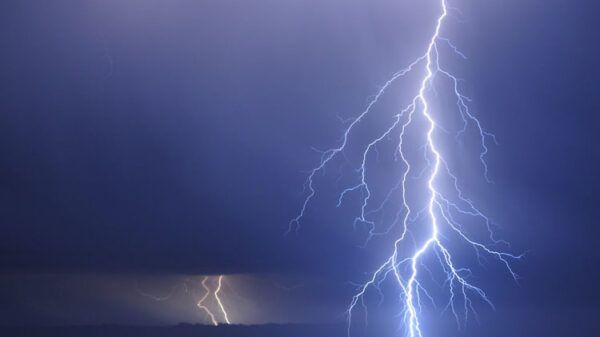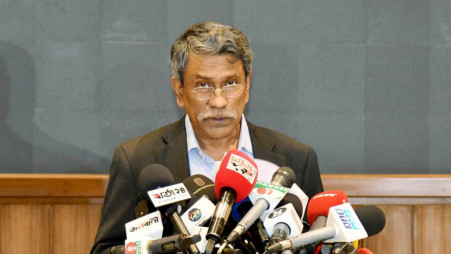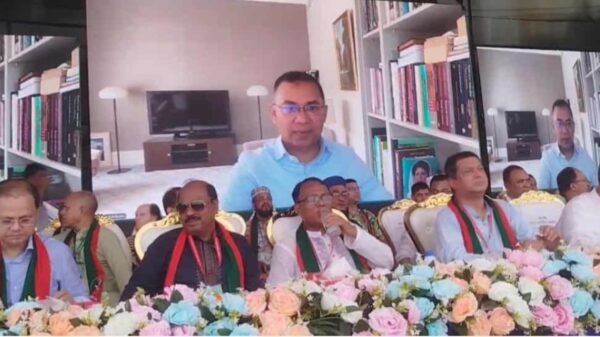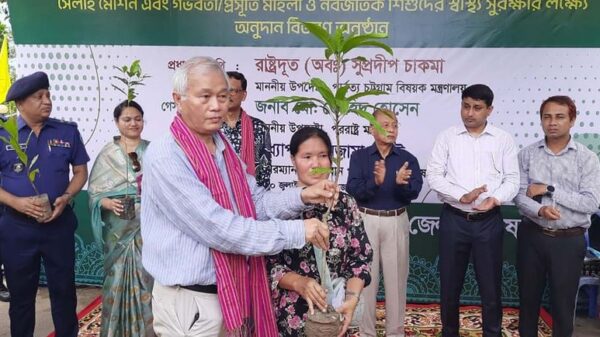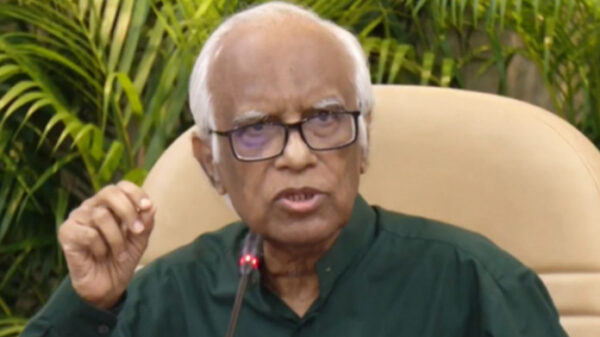A Correspondent:
The Dhaka City is carrying its fate of continuous unprecedented water logging after a moderate rainfall.
A growing number of studies blame clogged drains from polythene bags and the loss of natural canals due to encroachment as major reasons for the prolonged water logging in the city.
A study led by Sarwar Uddin Ahmed and Keinosuke Gotoh, affiliated with Nagasaki University’s Facul-ty of Engineering and Graduate School of Science and Technology, respectively, has delved into the environmental dynamics of Dhaka’s continuous water logging problem.
Their research, combining Contingent Valuation Method (CVM) surveys and satellite remote sensing, highlights the complex interplay between human behavior, urban development and environmental degra-dation in exacerbating flood risks.
Polythene Bags: Small Culprits, Big Impact
For decades, Dhaka’s drainage system has struggled to cope with the city’s rapid urbanization and mon-soon rains. But the surge in polythene bag usage has proved to be an especially pernicious problem. These lightweight, durable plastic bags are frequently discarded in the streets, blocking drains and water channels.
As Ahmed and Gotoh point out, polythene bags have jammed the drainage infrastructure, preventing free water flow and causing water to stagnate.
“Waterlogging is no longer just a result of heavy rainfall. Even moderate showers can lead to floods bcause the city’s drainage is clogged by plastic waste, particularly polythene bags,” Ahmed explained.
Recognising this, the government implemented a ban on the sale and use of polythene bags in Dhaka in January 2002, which was later extended nationwide by March of the same year.
But, the effectiveness of this ban has been mixed. While citizens surveyed in the CVM study generally perceive the ban positively, the persistence of flooding suggests that deeper systemic issues remain unre-solved.
Nature’s Drainage Under Threat
Dhaka once boasted a network of 65 canals that naturally drained rainwater into surrounding rivers such as the Buriganga, Turag and Shitalakhya. Yet yesterday, that number has dwindled to just 43, largely due to encroachment and illegal land filling.
These canals are more than mere waterways — they are critical arteries that prevent urban flooding by swiftly channeling excess rainwater away from inhabited areas. Unfortunately, many have been filled in or narrowed, reducing their capacity to handle monsoon runoff.
The River and Delta Research Centre (RDRC), based in Dhaka, conducted a comprehensive study in July 2024 highlighting the impact of canal encroachment on waterlogging. Their findings revealed that exca-vating just 15 key encroached canals could potentially resolve up to 80% of the city’s waterlogging is-sues.
The RDRC identified several vulnerable neighbourhoods that are particularly susceptible to flooding, including Pallabi Shiyalbari, Rupnagar, Eastern Housing, Kalshi, Mirpur 11, Tolarbagh, Ahmed Nagar and Paikpara.
These areas suffer from poor drainage as a result of blocked canals and inadequate municipal infrastruc-ture.
“We urgently need to protect our natural drainage systems from further encroachment and to restore ex-isting canals,” says an RDRC spokesperson. “Eviction drives, proper demarcation of canal boundaries, and community engagement are essential steps to reclaim these waterways.”
Remote Sensing Reveals Changing Land Cover
Ahmed and Gotoh’s research used satellite imagery from LANDSAT-4 and LANDSAT-7 to monitor land cover changes in Dhaka between 1989 and 2003. Their analysis showed a significant reduction in water bodies and agricultural or forested lands, with a corresponding increase in concrete structures.
In 1989, water areas accounted for approximately 24% of the city’s landscape, while forest/agricultural land made up 34%. By 2003, these figures had dropped to 18% and significantly less, respectively, as urban development accelerated.
“The reduction in water areas can partly be attributed to the banning of polythene bags and subsequent cleaning initiatives. But, the filling of water bodies by city developers also plays a major role,” notes Gotoh.
This shrinking of natural water reservoirs and drainage channels has compounded waterlogging, as the city’s ability to absorb and disperse rainwater diminishes.
Longer Flood Duration
Another alarming trend highlighted by the research is the increased duration of flooding. For example, data shows that while the 1988 flood lasted around 30 days, the 1998 flood persisted for 65 days despite being less severe in terms of rainfall.
Experts attribute this prolonged water logging to the slow recession of floodwaters blocked by polythene bags, garbage, and reduced canal capacity.
The consequences are far-reaching. Extended flooding damages urban infrastructure, disrupts daily life, and promotes the spread of waterborne diseases, which pose a serious public health risk for Dhaka’s densely populated communities.
Citizens’ Views
The CVM surveys conducted by Ahmed and Gotoh revealed that residents generally support the govern-ment’s decision to ban polythene bags, acknowledging its role in mitigating flooding. But the researchers caution that these findings are preliminary and call for larger, more detailed surveys to better understand public perceptions and willingness to participate in environmental conservation efforts.
Besides, they emphasized the need for continued monitoring using high-resolution satellite imagery and ground data to evaluate the long-term impact of polythene bag bans and other flood mitigation strate-gies.
Integrated Approach Needed
While banning polythene bags is a crucial step, experts agree that tackling Dhaka’s water logging prob-lem requires a holistic approach.
This includes strict enforcement of anti-encroachment laws, restoration and maintenance of natural ca-nals, effective waste management, and public awareness campaigns.
As urban sprawl continues, integrating sustainable city planning and environmental protection measures is imperative to safeguard Dhaka from worsening floods.
Dhaka’s waterlogging crisis is a multifaceted challenge shaped by environmental degradation, urbanisa-tion and waste mismanagement.
Over the last two days, Dhaka has received heavy rainfall, with the Bangladesh Meteorological Depart-ment (BMD) recording around 36 mm of rain on May 29.
While the showers brought some relief from the heat, they also caused severe waterlogging across many parts of the city. Key low-lying areas of the capital faced severe waterlogging, leading to disrupted traf-fic flow and long delays on major roads.
The BMD warns that more rain is expected in the coming days, raising concerns about worsening water-logging and continued traffic snarls if drainage infrastructure is not promptly cleared.
The work of researchers such as Sarwar Uddin Ahmed, Keinosuke Gotoh and organisations like the Riv-er and Delta Research Centre may serve as a basis for policymakers, city planners and citizens, according to Dhaka’s residents.







